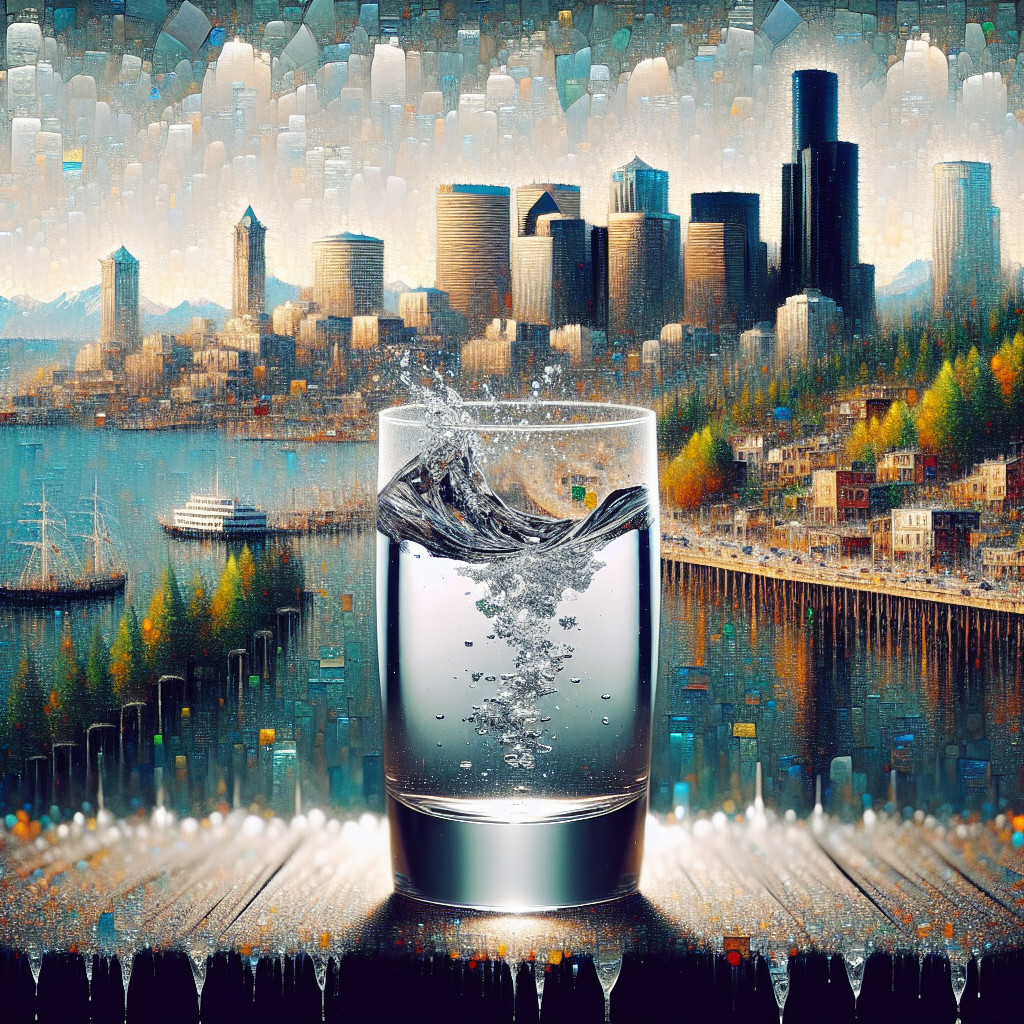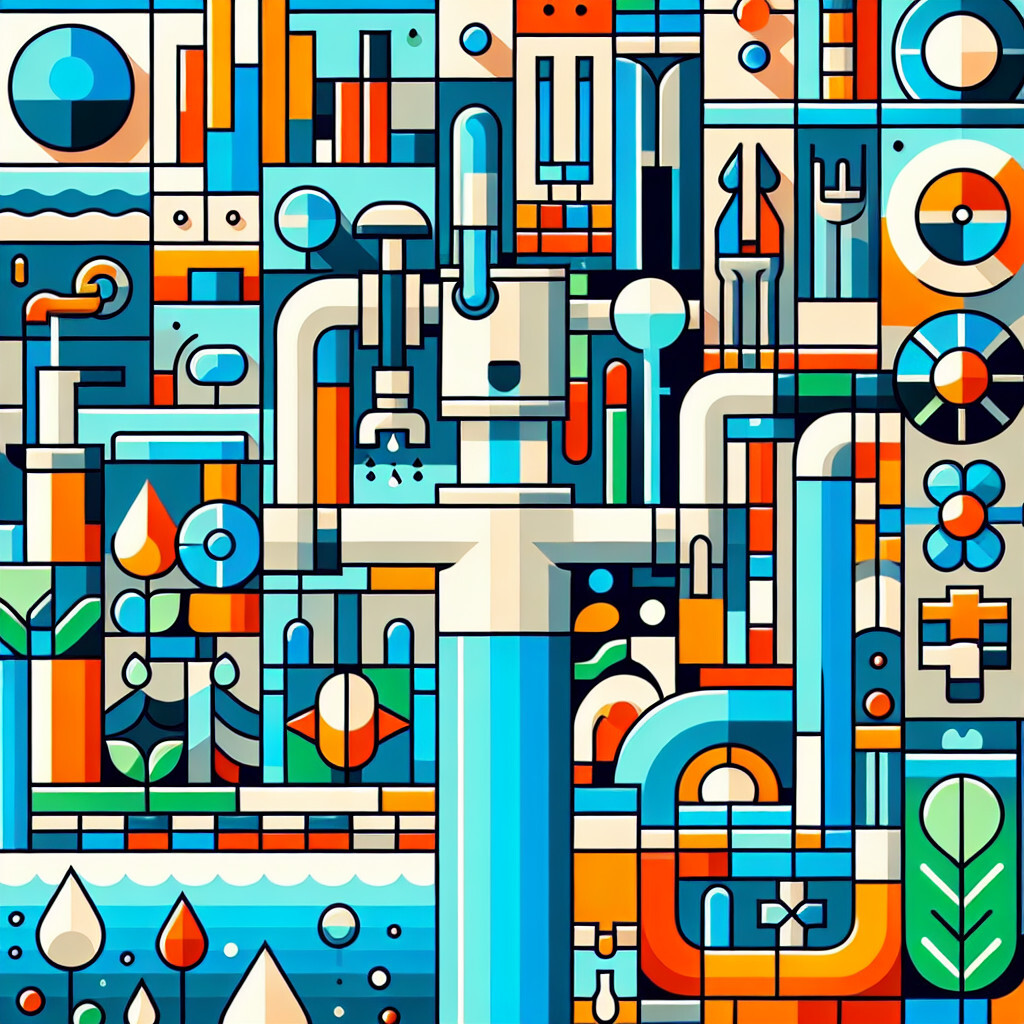-
Table of Contents
“Seattle’s Tap Water: Purity You Can Trust, Quality You Can Taste!”
Introduction

Seattle’s tap water quality is considered one of the best in the United States. The water is sourced from two protected watersheds in the Cascade Mountains, and is treated and tested regularly to ensure it meets or exceeds all federal and state water quality standards. The Seattle Public Utilities provides comprehensive reports on the water quality, detailing the levels of various contaminants and minerals. Despite the high quality, some residents choose to use additional filtration systems for personal preference.
Understanding the Source of Seattle’s Tap Water Quality
Seattle, a city renowned for its lush landscapes and vibrant culture, is also recognized for its exceptional tap water quality. The city’s tap water is not only safe to drink but is also considered among the best in the United States. This high-quality water is a result of the city’s unique geographical location, stringent water treatment processes, and rigorous testing protocols.
Seattle’s tap water originates from two pristine and protected sources: the Cedar River Watershed and the South Fork Tolt River Watershed. These watersheds, located in the Cascade Mountains, are naturally filtered by forests and mountain soils, providing a clean and sustainable water supply. The Cedar River Watershed, which supplies about 70% of Seattle’s water, is a 90,638-acre area that has been closed to the public since 1900 to maintain its purity. The South Fork Tolt River Watershed, on the other hand, provides the remaining 30% of the city’s water and is a 56,546-acre area that has been closed to the public since 1989.
The water from these sources is treated at state-of-the-art facilities before it reaches Seattle’s residents. The treatment process includes ozonation, a powerful disinfection process that kills bacteria and other microorganisms. This is followed by coagulation and flocculation, where chemicals are added to the water to bind together small particles into larger ones, which are then removed during sedimentation and filtration. The water is also treated with ultraviolet light to kill any remaining microorganisms, and a small amount of chlorine is added for residual disinfection.
Seattle Public Utilities (SPU), the entity responsible for the city’s water supply, conducts rigorous testing to ensure the water’s safety and quality. SPU tests the water at multiple stages throughout the treatment process, from the source to the tap. The water is tested for over 200 contaminants, including bacteria, viruses, and chemicals. In 2019 alone, SPU conducted over 20,000 tests on Seattle’s drinking water.
The results of these tests consistently show that Seattle’s tap water meets or exceeds all federal and state drinking water standards. In fact, the water is so pure that the city does not need to use phosphate additives to control pipe corrosion, a common practice in many other cities. This means that Seattle’s tap water is not only safe to drink but also has a fresh, clean taste that is often compared to bottled water.
However, it’s important to note that while the city’s water supply is of high quality, the condition of the plumbing in individual buildings can affect the water’s quality. Older buildings with lead pipes or fixtures can potentially contaminate the water. Therefore, residents in older buildings are advised to run their water for a few minutes in the morning to flush out any potential contaminants.
In conclusion, Seattle’s exceptional tap water quality is a testament to the city’s commitment to providing its residents with a safe and sustainable water supply. The city’s unique geographical location, advanced water treatment processes, and rigorous testing protocols ensure that the tap water is not only safe to drink but also tastes great. So, the next time you’re thirsty in Seattle, you can confidently reach for the tap.
The Impact of Climate Change on Seattle’s Tap Water
Seattle, a city renowned for its lush landscapes and abundant rainfall, is facing a significant challenge that could impact the quality of its tap water. This challenge is none other than climate change, a global phenomenon that is altering weather patterns and affecting water sources worldwide. In Seattle, the effects of climate change are becoming increasingly evident, with potential implications for the city’s tap water quality.
Seattle’s tap water primarily originates from two sources: the Cedar River Watershed and the South Fork Tolt River Watershed. These watersheds, nestled in the Cascade Mountains, are fed by rainfall and snowmelt, which are then treated and distributed to Seattle’s residents. However, climate change is disrupting this process, leading to changes in precipitation patterns and snowpack levels.
One of the most significant impacts of climate change on Seattle’s tap water is the shift in precipitation patterns. Scientists predict that the region will experience wetter winters and drier summers, a change that could affect the availability and quality of tap water. Wetter winters could lead to increased runoff, potentially carrying more pollutants into the watersheds. On the other hand, drier summers could reduce the amount of water available for treatment and distribution, potentially leading to water shortages.
In addition to changes in precipitation, climate change is also affecting snowpack levels in the Cascade Mountains. Snowpack serves as a natural reservoir, storing water during the winter months and gradually releasing it in the spring and summer as it melts. However, rising temperatures are causing the snowpack to melt earlier in the year, disrupting this natural water storage system. This could lead to lower water levels in the summer, just when demand for water is at its highest.
The potential impacts of climate change on Seattle’s tap water are not just limited to availability. They could also affect water quality. Increased runoff from heavier rainfall could carry more pollutants into the watersheds, while lower water levels could concentrate these pollutants, leading to poorer water quality. Moreover, warmer temperatures could promote the growth of harmful algae blooms, which can produce toxins that are difficult to remove during water treatment.
Seattle Public Utilities, the agency responsible for providing tap water to the city’s residents, is well aware of these challenges. They are actively monitoring the effects of climate change on the city’s water sources and are developing strategies to ensure the continued availability and quality of tap water. These strategies include increasing the capacity for water storage, improving the efficiency of water use, and enhancing the treatment processes to remove potential pollutants.
In conclusion, climate change poses a significant challenge to Seattle’s tap water, affecting both its availability and quality. However, with proactive monitoring and strategic planning, Seattle can mitigate these impacts and ensure the continued provision of safe, high-quality tap water to its residents. As climate change continues to alter our world, it is crucial for cities like Seattle to adapt and prepare, safeguarding their vital resources for future generations.
How Seattle Maintains High Standards for Tap Water Quality
Seattle, a bustling city nestled in the Pacific Northwest, is renowned for its commitment to environmental sustainability. This commitment extends to the city’s tap water quality, which is among the best in the United States. The city’s dedication to maintaining high standards for tap water quality is a testament to its broader commitment to public health and environmental stewardship.
Seattle’s tap water originates from two pristine and protected mountain sources: the Cedar River Watershed and the South Fork Tolt River Watershed. These sources are located in remote, forested areas, far from industrial pollution and urban runoff. The water from these sources is naturally clean and requires less treatment than water from other sources. This not only ensures the high quality of the water but also reduces the need for chemical treatments, aligning with Seattle’s commitment to environmental sustainability.
The Seattle Public Utilities (SPU), the entity responsible for managing the city’s water supply, employs a multi-barrier approach to water treatment. This approach includes source protection, filtration, disinfection, and testing. Source protection involves safeguarding the watersheds from potential contaminants. The SPU strictly controls access to these areas and implements forest management practices to protect the water at its source.
The water from the watersheds then undergoes filtration to remove any remaining particles, bacteria, and viruses. The filtration process used by the SPU is state-of-the-art, ensuring that the water is thoroughly cleaned without the need for excessive chemical treatments. Following filtration, the water is disinfected to kill any remaining microorganisms. The SPU uses ozone, a powerful disinfectant, and ultraviolet light, a non-chemical disinfectant, to treat the water. These methods are effective at eliminating pathogens while minimizing the formation of disinfection byproducts.
After treatment, the water is rigorously tested to ensure its quality. The SPU conducts over 20,000 tests each year on samples collected throughout the city. These tests check for over 200 potential contaminants, including bacteria, viruses, and chemicals. The results of these tests are publicly available, demonstrating the SPU’s commitment to transparency and accountability.
In addition to these measures, the SPU also works to maintain the quality of the water as it travels from the treatment facilities to homes and businesses. The city’s water distribution system is regularly inspected and maintained to prevent contamination. The SPU also implements a corrosion control program to prevent lead and copper from leaching into the water from plumbing materials.
Seattle’s commitment to maintaining high standards for tap water quality is a model for other cities. The city’s approach, which combines source protection, advanced treatment methods, rigorous testing, and system maintenance, ensures that its residents have access to clean, safe drinking water. This commitment to water quality reflects Seattle’s broader dedication to public health and environmental sustainability. It is a testament to the city’s belief that access to clean water is a fundamental right and a critical component of a healthy, sustainable community.
The Role of Filtration in Enhancing Seattle’s Tap Water Quality
Seattle, a city renowned for its lush landscapes and vibrant culture, is also recognized for its commitment to providing its residents with high-quality tap water. The city’s tap water is sourced primarily from two protected mountain reservoirs, the Cedar River Watershed and the South Fork Tolt River Watershed. These sources are known for their pristine conditions and natural filtration processes, which contribute significantly to the quality of Seattle’s tap water. However, despite the natural purity of these sources, the city’s water supply undergoes rigorous filtration processes to ensure it meets and exceeds federal and state drinking water standards.
Filtration plays a pivotal role in enhancing the quality of Seattle’s tap water. It is a process that removes impurities and contaminants from the water, ensuring it is safe for consumption. The city employs a multi-barrier approach to water treatment, which includes filtration, disinfection, and corrosion control. This comprehensive approach ensures that the water is not only free from harmful bacteria and viruses but also from sediments and other particulate matter that could affect its clarity and taste.
The filtration process begins at the source, where the water is naturally filtered through the forested watershed. This natural filtration process removes large particulates and helps to reduce the amount of treatment required later. Once the water reaches the treatment facilities, it undergoes coagulation and flocculation, processes that clump together small particles into larger ones, making them easier to remove during filtration.
Following this, the water is passed through layers of sand and anthracite coal in large filters. This process removes the remaining particulates and some microorganisms. The filtration process is carefully monitored and controlled to ensure that it effectively removes contaminants without compromising the water’s taste or odor.
After filtration, the water is disinfected using ultraviolet light and chlorine. Ultraviolet light is a powerful disinfectant that kills or inactivates harmful microorganisms, while chlorine helps to maintain disinfection as the water travels through the distribution system to consumers’ taps. The city also adds a small amount of sodium hydroxide to the water to reduce its corrosivity, protecting household plumbing and reducing the potential for lead and copper to leach into the water.
Seattle’s commitment to rigorous filtration and treatment processes has resulted in tap water that consistently meets or exceeds all federal and state drinking water standards. The city’s tap water is regularly tested for over 200 potential contaminants, and the results are made publicly available in an annual water quality report. This transparency not only demonstrates the city’s commitment to providing high-quality tap water but also helps to build trust and confidence among its residents.
In conclusion, the role of filtration in enhancing Seattle’s tap water quality cannot be overstated. It is a critical component of the city’s multi-barrier approach to water treatment, ensuring that the water is safe, clean, and tastes good. While the natural purity of Seattle’s water sources certainly contributes to the quality of its tap water, it is the city’s commitment to rigorous filtration and treatment processes that truly sets it apart.
Q&A
1. Question: What is the source of Seattle’s tap water?
Answer: Seattle’s tap water comes from two sources: the Cedar River Watershed and the South Fork Tolt River Watershed.
2. Question: Is Seattle’s tap water safe to drink?
Answer: Yes, Seattle’s tap water is considered safe to drink. It meets or exceeds all federal and state water quality standards.
3. Question: What contaminants are tested in Seattle’s tap water?
Answer: Seattle’s tap water is tested for various contaminants including bacteria, nitrates, lead, copper, and other organic and inorganic substances.
4. Question: How often is Seattle’s tap water tested?
Answer: Seattle Public Utilities tests the water quality every day, collecting and testing more than 20,000 samples each year.
Conclusion
In conclusion, Seattle’s tap water is considered to be of high quality. It surpasses federal and state drinking water standards, sourced from protected mountain sources, and is thoroughly tested and treated to ensure safety and quality. However, individual experiences may vary depending on the condition of local plumbing.






